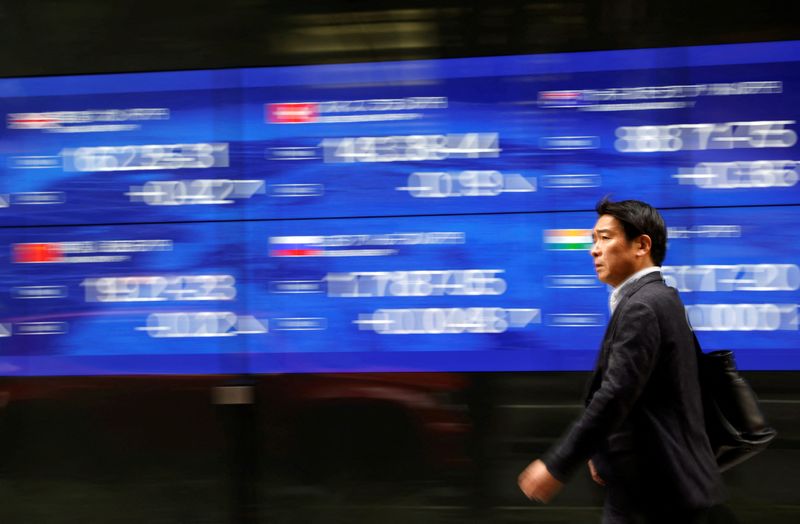Jumbo Fed rate cut sparks global market rally
By Marc Jones
LONDON (Reuters) - Resurgent risk appetite swept global financial markets higher from stocks and metals to gold and oil on Thursday, after the U.S. Federal Reserve kicked off its long-awaited interest rate cutting cycle with a half point move.
Europe didn't seem to mind that the Bank of England opted against a second cut in as many months and, with Wall Street futures markets pointing to another round of record highs shortly, the first Fed cut in four years was clearly uplifting.
The cut, and the prospect of more before the end of the year, pushed MSCI's 47-country world stocks index close to a record high too while Europe's main bourses were all more than 1% stronger. (EU )
In currency markets, the dollar had largely overcome its initial post-Fed dip. [/FRX] Gold was up while oil and the industrial metals complex were stronger on the view that lower rates equals stronger demand. [O/R]
"The Fed delivered a very dovish rate cut. This bodes well for risk assets," Brown Brothers Harriman Senior Markets Strategist Elias Haddad said.
The U.S. central bank lowered its benchmark policy rate by 50 basis points to 4.75%-5%. It also dramatically cut the median 'dot plot' profile on where its rate setters expect rates to be in future, though Fed chief Jerome Powell emphasized prudence.
"I do not think that anyone should look at this and say, oh, this is the new pace," Powell told reporters after the half point cut was announced.
"We're recalibrating policy down over time to a more neutral level. And we're moving at the pace that we think is appropriate, given developments in the economy."
In Europe, the dollar was off recent lows hit against the euro, at $1.1157 and up 0.5% on the yen at 142.96 yen, after climbing as high as 143.95. It couldn't fend off high-flying sterling though, which was at its highest since early 2022 and buying $1.33.
As well as keeping rates steady, BoE policymakers voted to run down its QE-era stock of British government bonds by another 100 billion pounds over the coming 12 months.
Bond markets were recalibrating too after their recent busy spell. Ten-year Treasury yields were just under 3.7% compared with 4.7% back in April, while Europe's benchmark - the 10-year German Bund - was at 2.2%, a 1-1/2 week high. [GVD/EUR]
CUT OR COVER
It wasn't just all about the Fed and BoE. Norway's central bank held its rates at a 16-year high but it signalled it might cut them next year, while Wednesday saw Brazil, which has been cutting its rates this year, raise them again.
In Asia overnight, the bulls drove Japan's Nikkei up 2.1% and stock markets in Australia and Indonesia to record highs. (T )
Expectations that the People's Bank of China will also ease its policy rate on Friday helped too. Chinese bond yields dipped again, the yuan hit a 16-month peak of 7.0640 against the dollar, and Hong Kong's Hang Seng jumped over 2%. [.SS]
One dampener was South Korea returning from a holiday with heavy selling in chipmakers, after a downbeat Morgan Stanley note that halved SK Hynix's target price. SK Hynix shares tumbled 6% and Samsung (KS:005930 ) fell 1.6%.
No such worries for commodity markets. Oil prices were up over 1%, with benchmark Brent crude futures climbing back above $74 a barrel for the first time in over a week and U.S. crude at $71.50. [O/R]
Bellwether global industrial metals copper , aluminum and nickel all rose 1-1.4%.
The Bank of Japan will round out a bonanza week for interest rate decisions on Friday. It is not expected to do anything this meeting but, in stark contrast to the broader global trend, it could line up another rate hike for as soon as October.
Source: Investing.com
